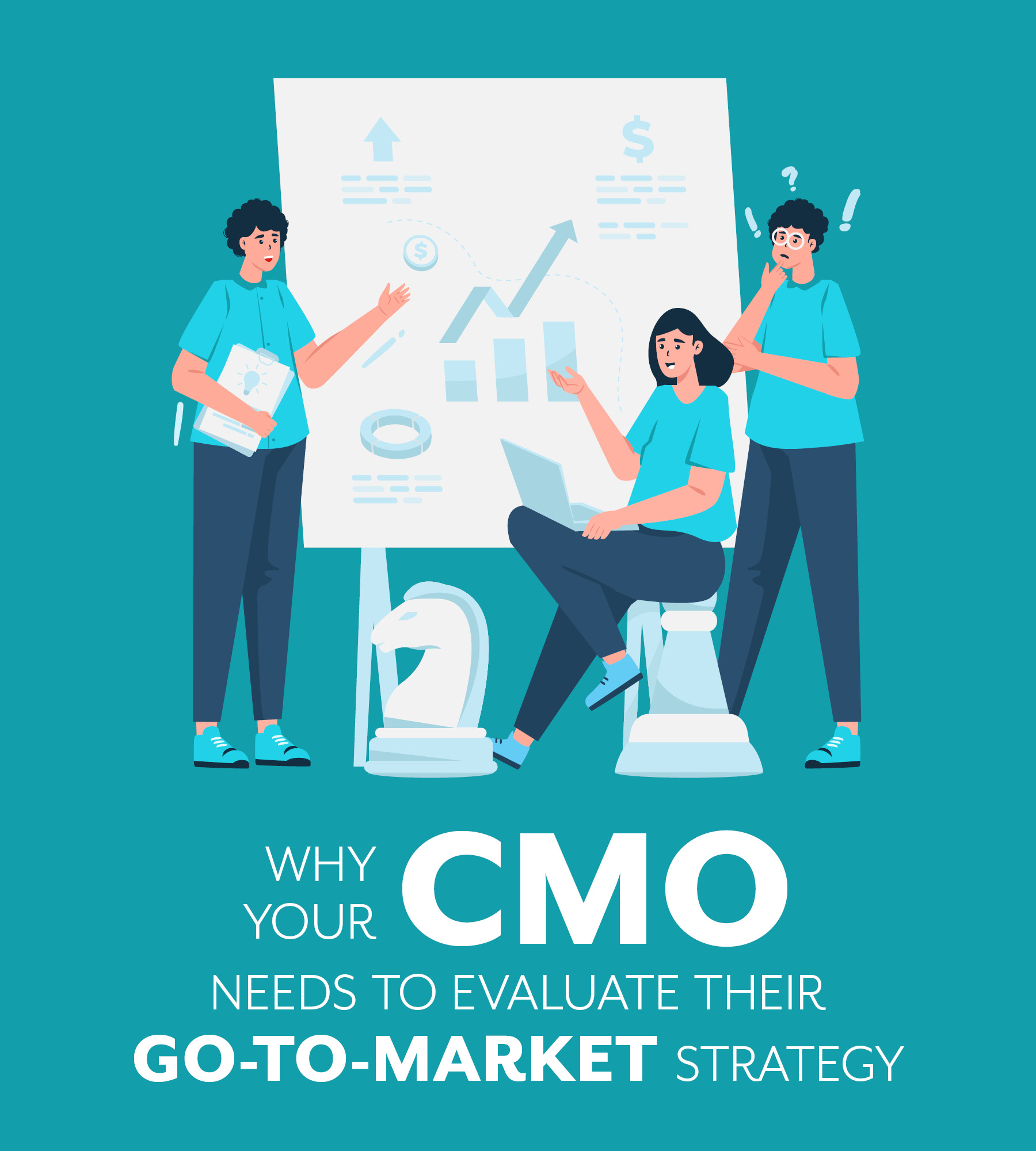Language
You can read the magazine in one of the following languages
Geolocation
You can read the global content or the content from your region

In the current economic landscape, retention naturally sits at the top of mind. Yet any visionary CEO worth their salt will still be on the hunt for the next engine to fuel growth, and it could be your CMO who proves instrumental in significantly contributing to your growth agenda.
According to the ‘How the CEO–CMO relationship can drive outsize growth’ report released by strategy and consulting firm McKinsey & Company in October 2023, CEOs who place marketing at the core of their growth strategy are better placed to achieve greater levels of annual growth than CEOs who do not.
McKinsey’s research emphasizes the pitfalls of budget cuts and underestimating the power of marketing during uncertain times. Instead, CMOs should be urged to reallocate resources from inefficient spending and reinvest it in high-growth areas.
Senior marketers increasingly turn to the latest advancements in marketing science to find an enlightened approach when seeking out larger opportunities. Given that only five percent of CEOs hail from a marketing background, I’ll get you up to speed on the recent advancements. Over the last two decades, there’s been an explosion in marketing science, primarily led by Australia’s groundbreaking and globally lauded Ehrenberg-Bass Institute for Marketing Science, based at the University of South Australia. The popularization of this research has led to a renewed focus on marketing effectiveness.
In 2024, any proficient CMO is expected to craft a strategy leading to tangible commercial impact.
To do so, they adopt logical and empirically proven ways to increase market share. You have undoubtedly been subjected to exhaustive presentations of the latest marketing principles from your CMO, including the 60/40 rule, the 80/20 rule, the ‘always be in market’ rule, the ‘invest heavily in long-term brand building’ rule and the ‘buy excess share of voice’ rule. The rules come backed up with case studies of market-leading brands who have implemented these formulas and already written the success stories your brand is still dreaming of.
CMOs often use this research to run a playbook based entirely on what’s worked for established market leaders, without considering that the market leaders get to play by a different set of rules.

In 2024, any proficient CMO is expected to craft a strategy leading to tangible commercial impact.
For a start, market leaders usually set the tone for an entire category, effectively writing the category playbook that spans everything from packaging, pricing strategies and distribution channels to advertising messages, media splits and customer service levels. Playbooks also shape the focus within a given category, defining where brands direct consumers’ attention through communication and which features and benefits should take center stage.
Playbooks demonstrate why most players in most categories behave in almost identical ways. In the detergent market, the category playbook dictates a focus on stain removal, targeting busy parents and mass media advertising, primarily on television. In the meal kit market, communications are designed to showcase an abundantly wide variety of easy-to-cook foods while targeting single income, no kids and dual income, no kids households on social media. The men’s deodorant market concentrates on long-lasting performance, advertises during sports and targets young, active men.
On the surface, following the market leader makes sense. After all, they didn’t achieve dominance by accident; their playbooks must work.
And they do, for them.
But for those of us deploying these strategies without a 40-percent-plus market share to begin with, we can expect a lot of head-scratching, hand-wringing and ultimately, blame-gaming when these empirically proven, scientific methods don’t work out.
It pains me to say that I’ve learned firsthand across more categories than I’d care to admit that what’s proven to keep juggernauts plowing forward rarely has the same impact on challenger brands hungry for market share.
Market leaders tend to have bigger budgets, better distribution, more customers and a longer tail of historical advertising from which to grow. They also have inertia.
The culmination of these factors means they also benefit from the ‘Double Jeopardy’ rule, an empirical concept conceived and proven by the Ehrenberg-Bass Institute. The gist of the idea is that big brands naturally have more customers to start with and get better returns on every advertising dollar they spend because more people are already willing to buy them. For challenger brands, the opposite is true; there are fewer dollars to spend and each dollar generates a lower rate of return.

The biggest beneficiary of a challenger brand’s underperforming dollars is the same market leader whose market share it’s trying to steal.
Things go from ‘exponentially worse’ to ‘just plain diabolical’ when we consider that the biggest beneficiary of a challenger brand’s underperforming dollars is the same market leader whose market share it’s trying to steal.
Our busy lives and the volume of advertising we’re exposed to daily mean consumers aren’t paying that much attention to what we’re saying. It’s painfully easy, therefore, for ‘brand ads’ to become ‘category ads’, triggering audiences to shop the category rather than our products. Burger King’s ads sell Big Macs (“I’d love a burger”), Pepsi ads sell cans of Coke (“I need a cool drink to quell my thirst”) and Bendigo Bank ads drive CommBank mortgage applications (“That reminds me, I need to sort my mortgage”).
However, there is a way around it, and thankfully, it doesn’t include spinning up a new playbook from scratch, which is an expensive, time-consuming and, thankfully, unnecessary exercise.
CMOs will forensically assess their own category to see what’s working, leaving a marketing blindspot that needs illumination. My advice is simple but packed with promise. By only examining what’s working in our category, we miss out on everything already working for our target market. CMOs would be well served to cast their nets wider and take inspiration from unrelated categories already winning big with our most desirable segments.
One strategy that successful challenger brands adopt is lifting and shifting an entire playbook from a different category already appealing to their audience.
United States canned water brand Liquid Death Mountain Water completely redefined the health and wellness category by ripping up the ‘bottled water’ playbook. Instead, they borrowed from heavy metal and punk rock aesthetics and attitudes, allowing them to successfully target an entirely different segment of the market: young men who might have only drunk water at the gym. Now, their bottled water choice is a lifestyle decision.

Adopting successful playbooks from seemingly unrelated categories allows you to leverage already proven strategies to propel your growth agenda.
From their quirky, rebellious messaging to their tallboy cans and the outrageous content they produce, the brand isn’t in the same universe, let alone the same aisle as Evian, Dasani or the bland ocean of branded water competitors. This approach certainly got them noticed. The brand reported global sales of US$263 million last year. It has also amassed 3.4 million Instagram followers and has just completed its second capital raise at a valuation of US$700 million.
Similarly, HANKS, a female-founded, female-focused sexual health brand, subverted the traditional lubricant and condom category (historically built around a ‘nightclub bathroom aesthetic’) by adopting the skincare and cosmetics playbook already popular with their customer base. This strategic shift has differentiated the brand and led to explosive growth and widespread availability.
The brand is built around beautifully photographed products in feminine colors, detailed ingredient and ‘free from’ lists, prominent customer reviews and even an online quiz to help find the right products – much like choosing a foundation. The once direct-to-consumer brand is now stocked in major supermarkets across the United Kingdom. It has been profitable since day one and is building an ever-expanding product line.
Challenger brands benefit from exploring categories that already win over their target audience. Adopting successful playbooks from seemingly unrelated categories allows you to leverage already proven strategies to propel your growth agenda. This playbook is also tried and tested.
Now, it’s up to you (and your CMO) to take advantage of it.

Dan Monheit
Contributor Collective Member
Dan Monheit is the Founder and CEO of Hardhat, Australia’s foremost agency built on behavior, with clients including Kogan.com, Simply Energy, Superhero and DocuSign. Regarded as one of the industry’s leading thinkers in the areas of brands, communications and human decision-making, Dan has presented locally and at major international events, including SXSW in Austin, Texas, as well as being invited to collaborate on content series with the likes of Meta, Google and CarSales. His book 'The Why, the Book' is an Amazon Marketing & Consumer Behavior #1 Best Seller. For more information visit https://www.amazon.com.au/Why-Book-Dan-Monheit/dp/0648980006